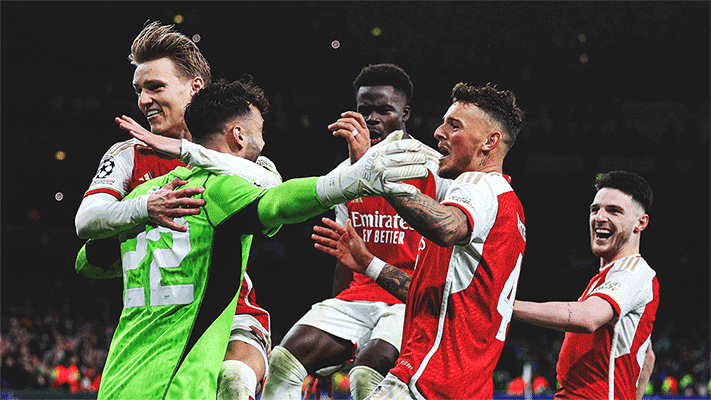Jonas Eidevall spoke to the media after we defeated Brighton & Hove Albion 4-0 at home.
The boss reflected on our winning start to the WSL season, how we broke down our opponent's low block, and how training with academy sides can improve our decision-making.
On breaking down the well-regimented Brighton side…
It comes down to keeping belief in your model. I don’t mind teams playing like this against us. I like to play the same game over and over again because then we are prepared for it. I think the consequence of the way that we play is that it will look like this a lot. When teams have a higher defensive line than us, then we play the ball in behind. Like we did with Stina in the beginning: that was a one-on-one and forced the red card. We have a lot of pace against a higher line so most teams will play in a lower block because that’s how teams try to handle our strengths.
On our forwards, like Caitlin Foord, driving at defenders...
It’s key because of course you can pass the ball and try combination play, but when you come down the side, if you can dribble as well, it means that teams have to cover all the time. When they have to cover, that’s when you get the free player. That’s so important. Whenever the defending team doesn’t give that cover, we need to encourage Caitlin on those one v ones all the time because that forces them to cover more and that leaves us a free player to pass to.
A team that never dribbles in those situations just tells the defending team that they don’t need to give cover, their central defender doesn’t need to come out and the midfielder doesn’t need to come back. That means that it’s easy for teams to resist pressure. To me that’s key.
On how training prepared us for the early Brighton red card…
We didn’t have 22 players ahead of this game, so we often trained with uneven numbers. When I want to practice attack, I want to practice with 10 players because it is really hard to practice with eight and you start having really odd positioning on the pitch. Then I would rather train 10 versus seven because in the low block we need to be so good. We should be able to defend with seven players and have it feel like we are defending with 10 if we move quickly enough with the ball. We do that often in training, for the attack to be a full-sized team – not because we think we are going to play against teams with players sent off, but we do it often.
On the value of training with our men's academy sides...
It’s all about reactions but it’s also about being really good in your positioning. That is what is recognisable about the way we play: we are so much better at always having players behind the ball when we play forward so that if the play breaks down, we can close down quickly.
It’s about practising to get the right reactions but also getting the right positioning. When we play against our men's academy teams, our positioning needs to be better because we don’t have as much time to react and that drives the positioning more. There are some teams that we could just beat on pure talent but for us to develop as a team, our positioning needs to be spot on every time so that we build that foundation. We have done that much more since the spring so we can have that in combination with the big talent that we have.
On playing with our academy sides more often...
We managed to play a game behind closed doors against our under-15s which was very beneficial for us. It was also very good to connect with our academy coaches on the men’s side and we are now looking to see whether we can do it more often – whether it is a game or just a practice. For us, that will decrease the time and space we have to improve our positioning and decision-making.
Copyright 2025 The Arsenal Football Club Limited. Permission to use quotations from this article is granted subject to appropriate credit being given to www.arsenal.com as the source.











